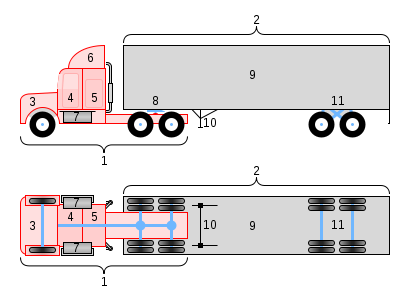Quote
The need for road surface maintenance is greatly attributable to the heaviest vehicles. Based on the findings of the American Association of State Highway Officials (AASHO) road test, damage caused by heavy trucks was long thought to increase with approximately the fourth power of the axle load. This means that one axle of 10 tons on a heavy truck was 160,000 times more damaging to a road surface than an axle of 0.5 tons (car scale).End quote
160,000 times more damaging to the road tha a car ! I rest my case.
The need for road surface maintenance is greatly attributable to the heaviest vehicles. Based on the findings of the American Association of State Highway Officials (AASHO) road test, damage caused by heavy trucks was long thought to increase with approximately the fourth power of the axle load. This means that one axle of 10 tons on a heavy truck was 160,000 times more damaging to a road surface than an axle of 0.5 tons (car scale).End quote
160,000 times more damaging to the road tha a car ! I rest my case.




